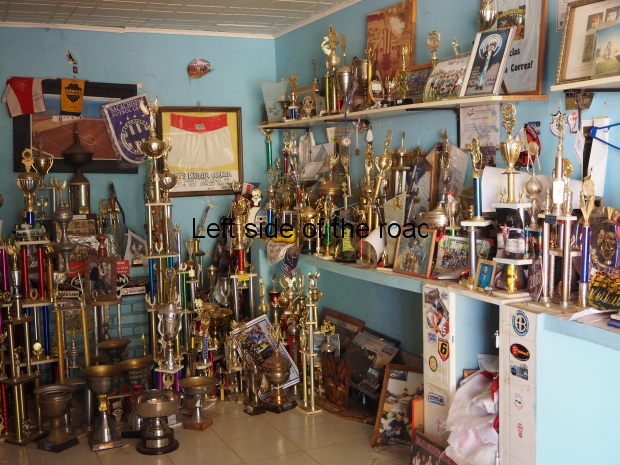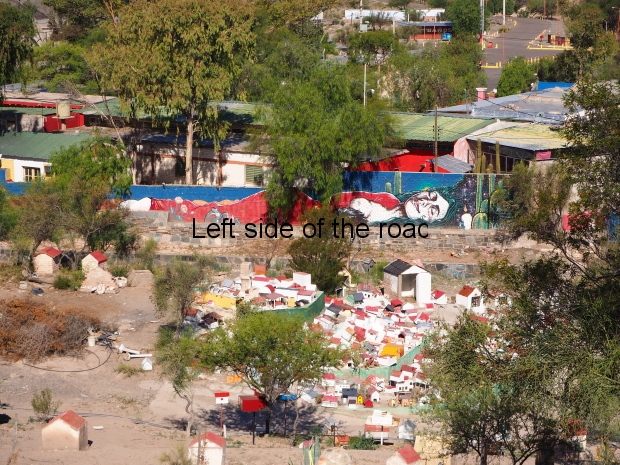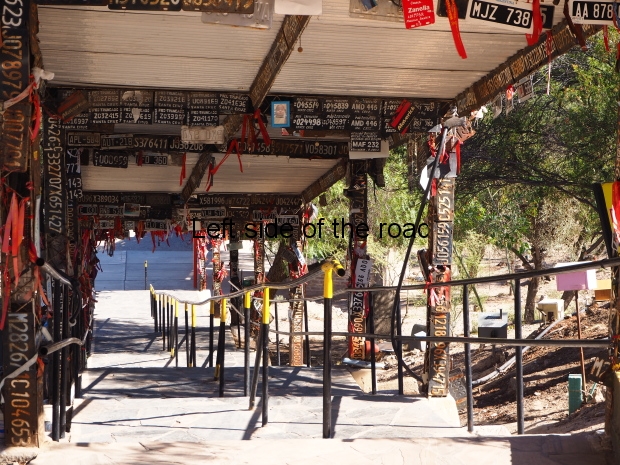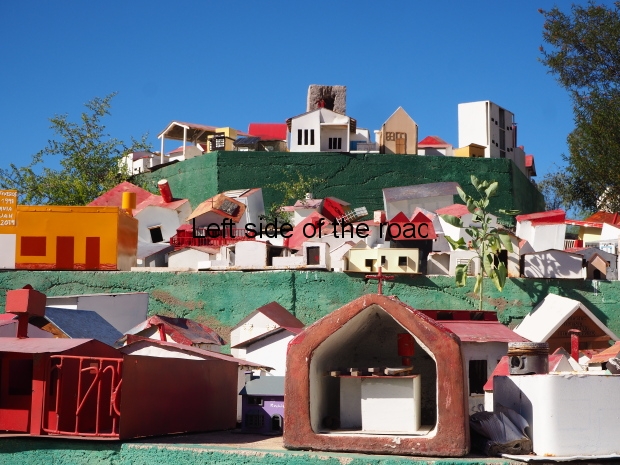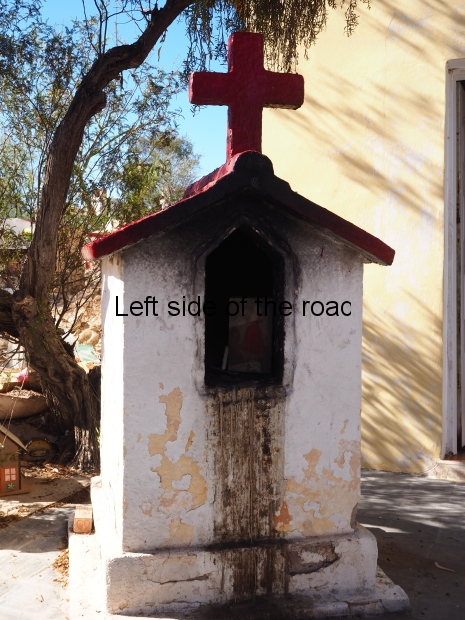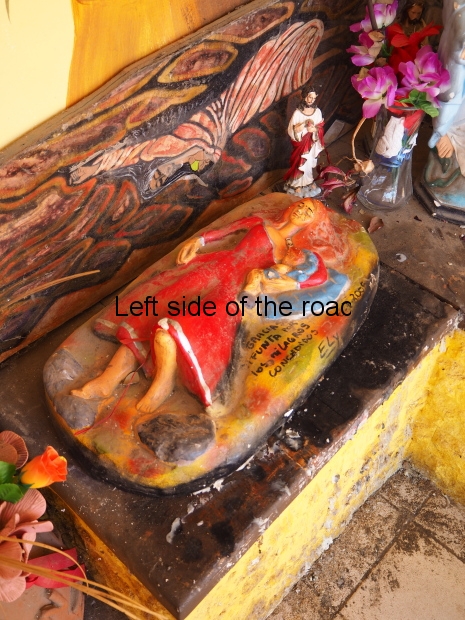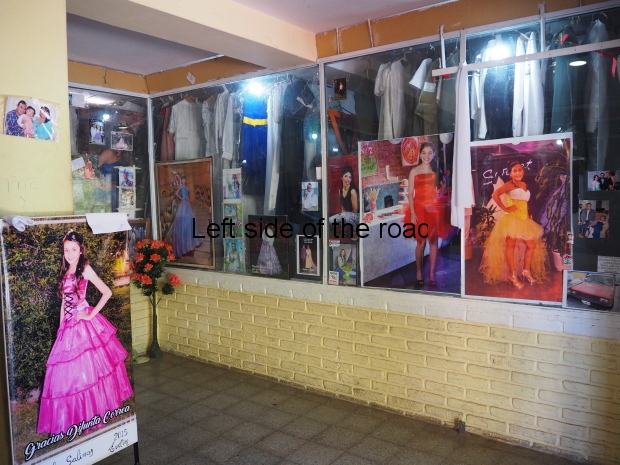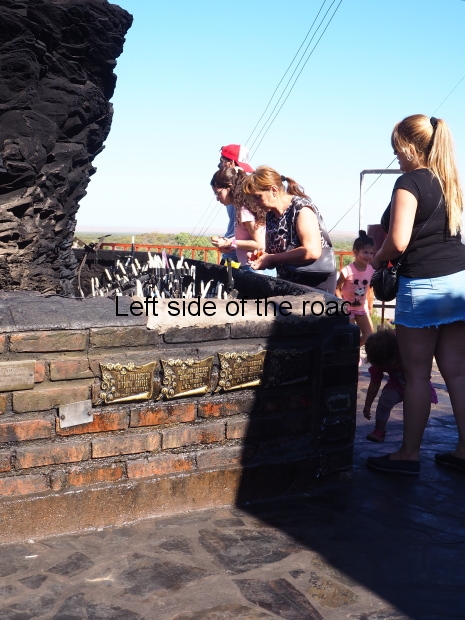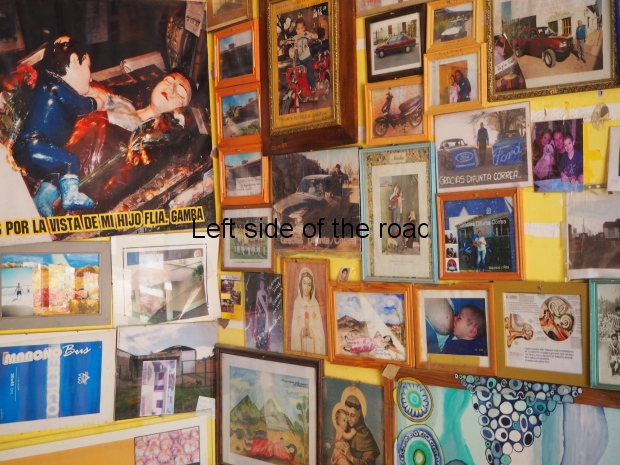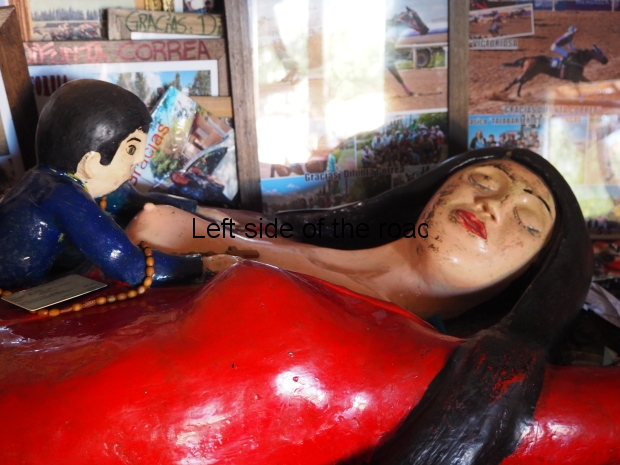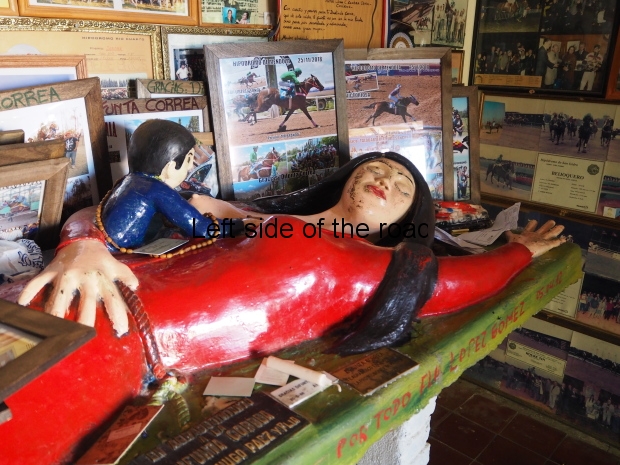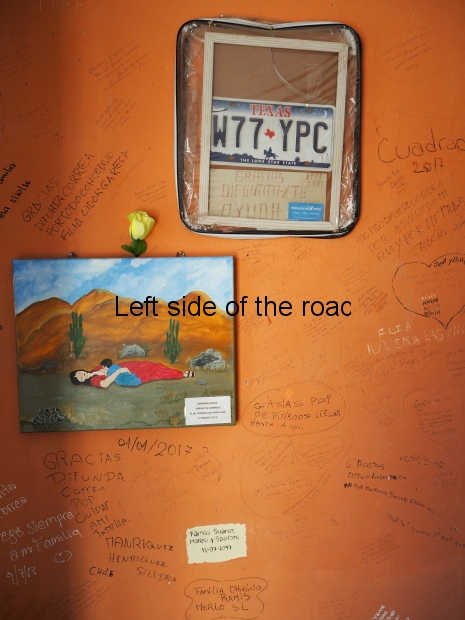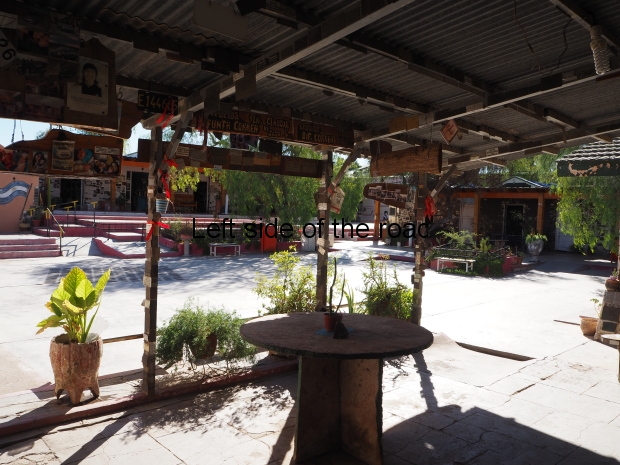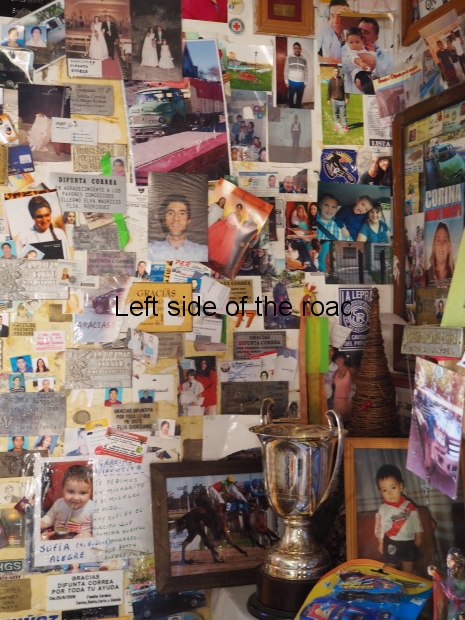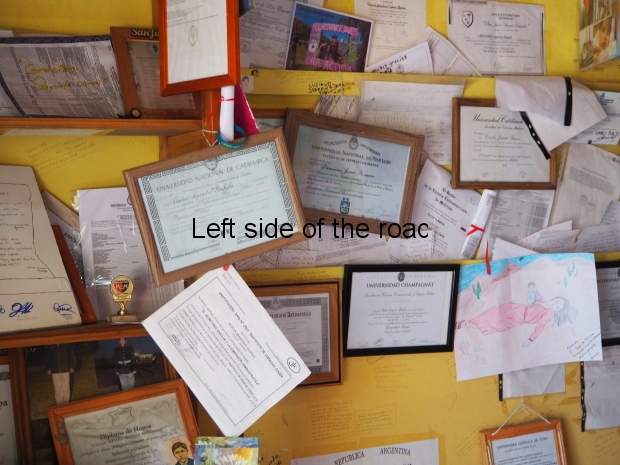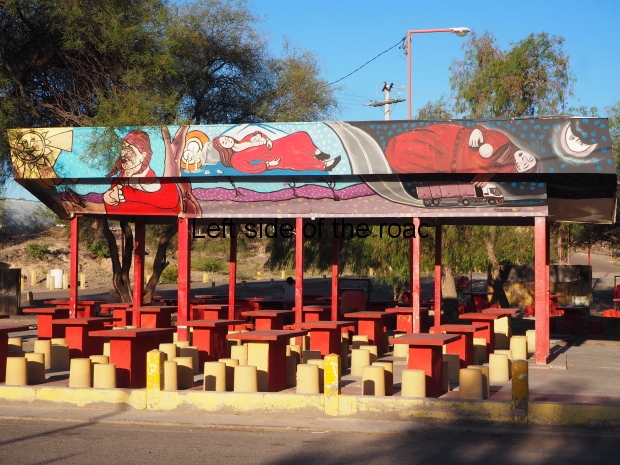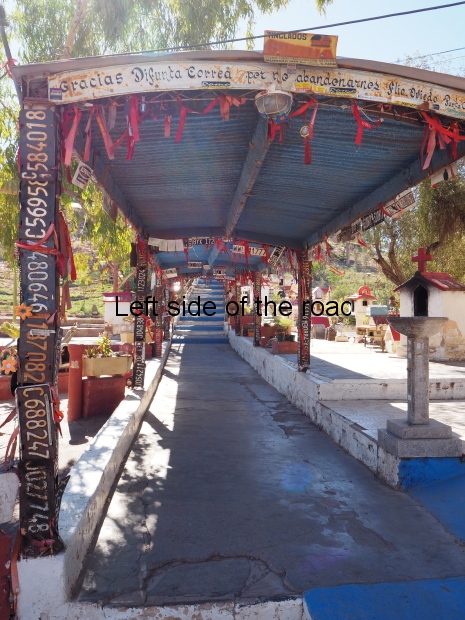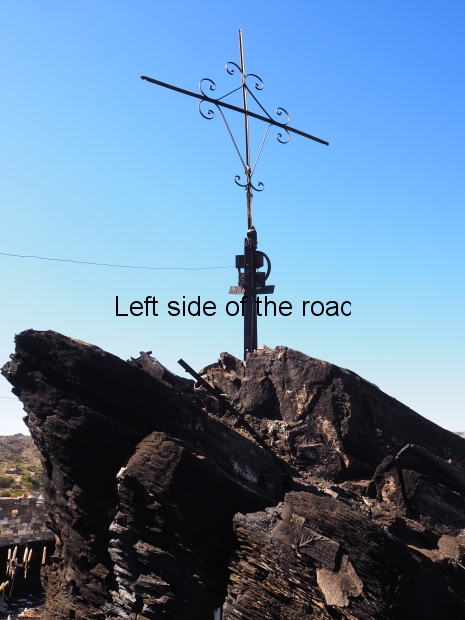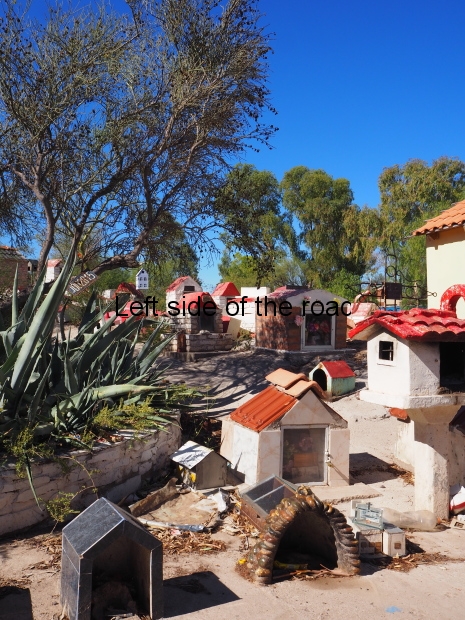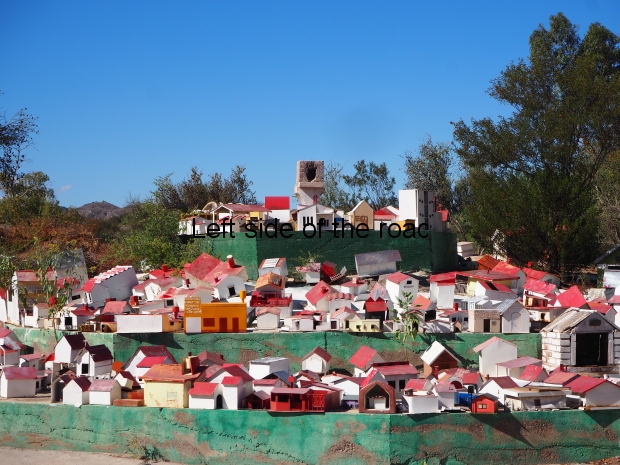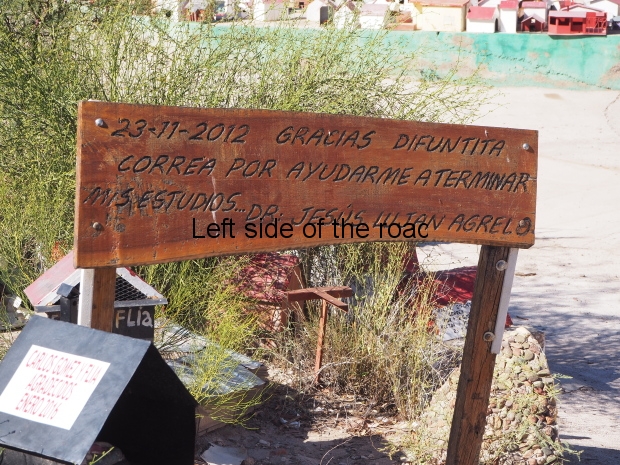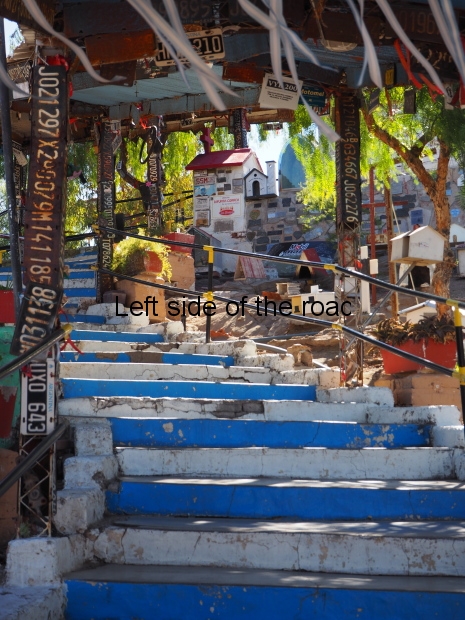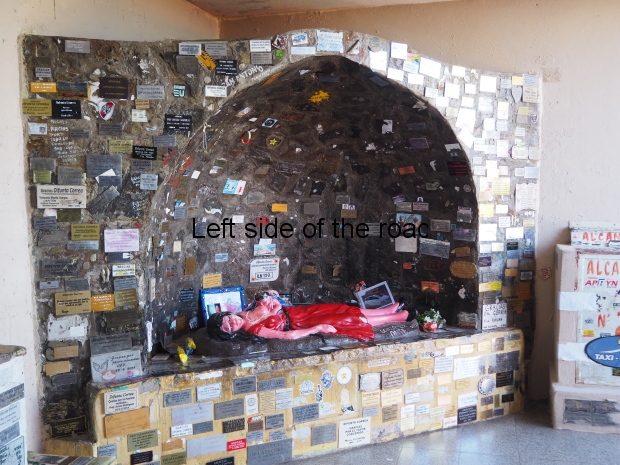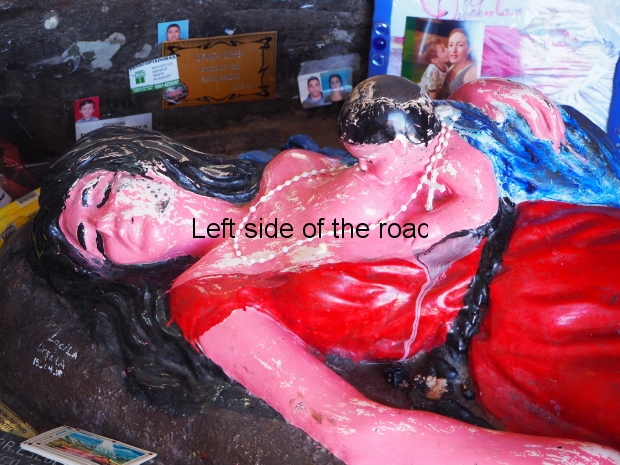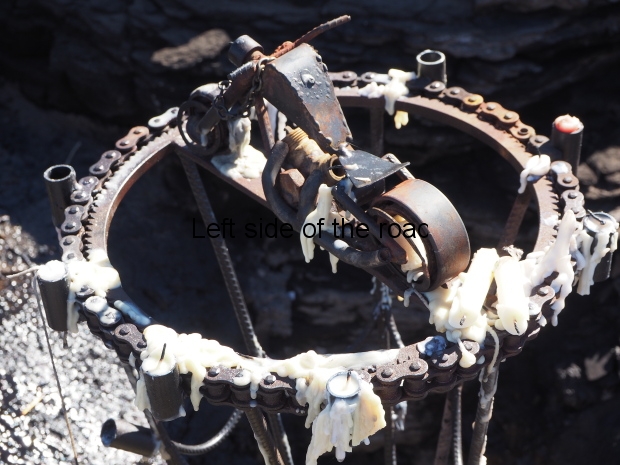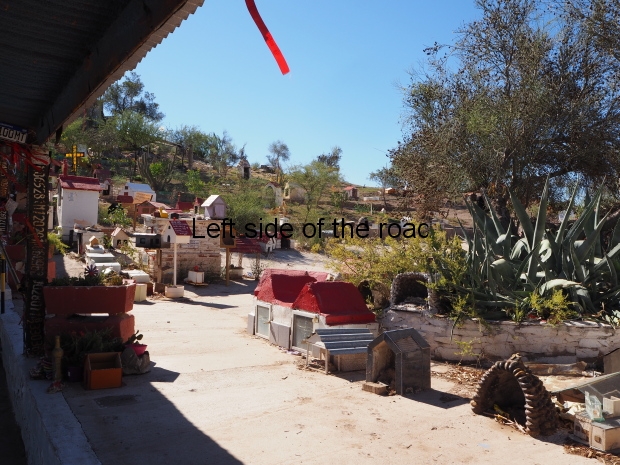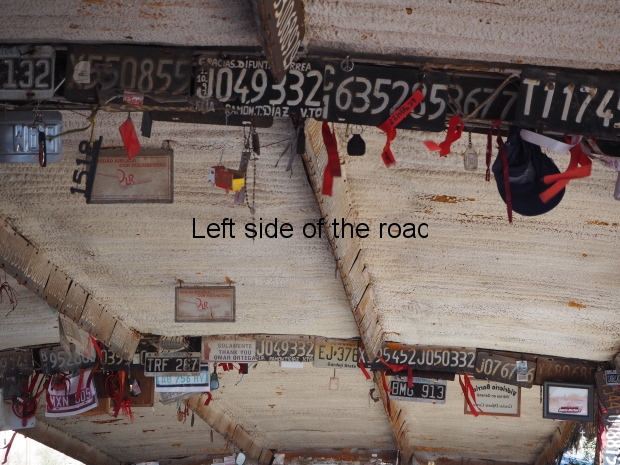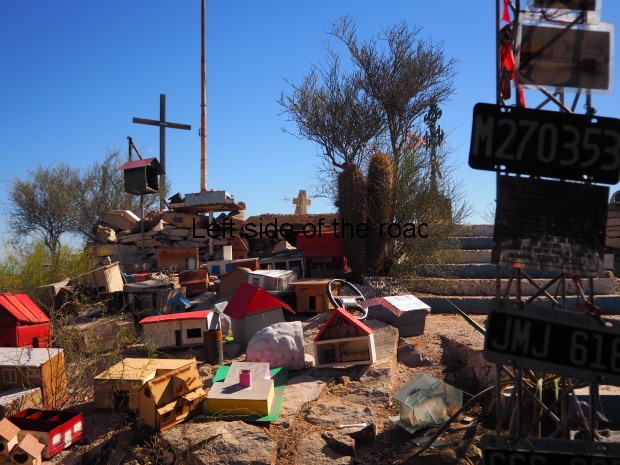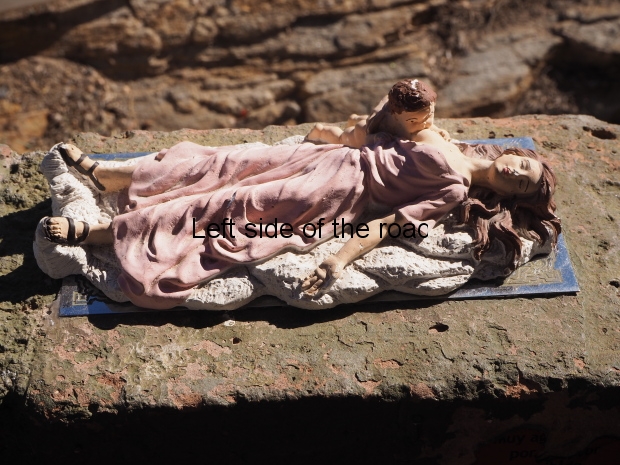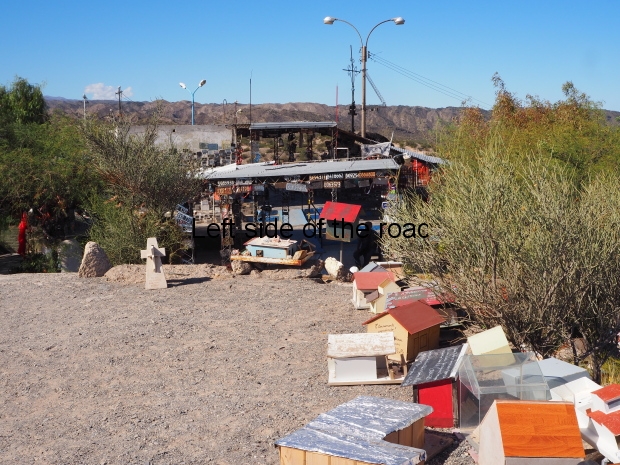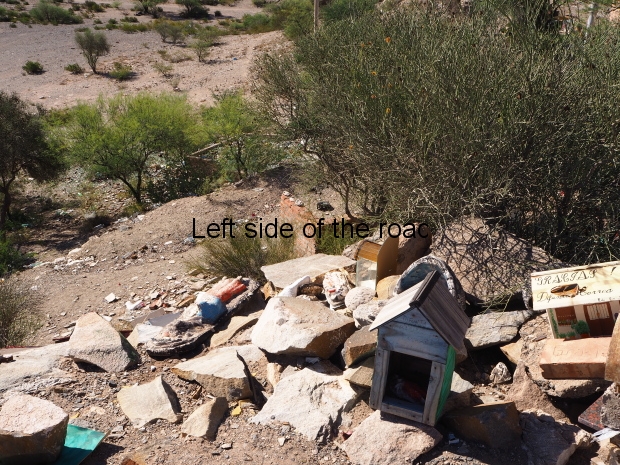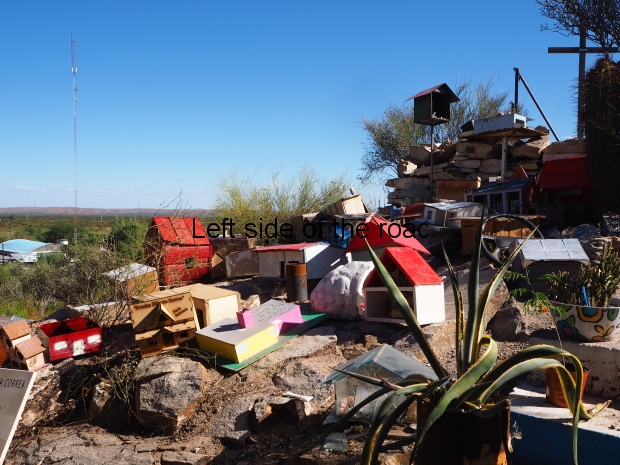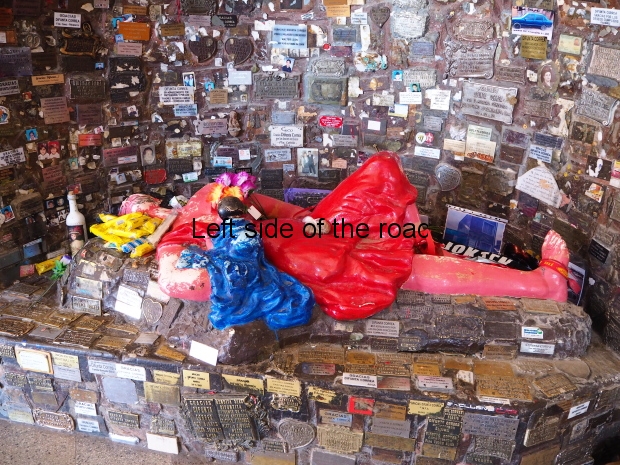
La Difunta Correa
The shrine of La Difunta Correa – the deceased Correa
A few days ago I made my first pilgrimage to a pagan shrine. (At least it wasn’t Christian one.) I didn’t do on my knees or by stripping the skin off my back with a metal flay – the like of which I saw in a priest’s cell in Sicily – but on a regular bus from San Juan to a small village known as Vallecito, about 65 kms away and taking just over an hour.
The story of the Difunta Correa is as strange and unbelievable as any produced by the mainstream religions. Her name was Deolinda Correa and she was married to a conscript in the war of Independence against the Spanish crown. She heard that he was sick (how that was possible for a poor conscript and his wife is a mystery to me) and she decided (for bizarre reasons) to head to the war zone to give him succour.
She was also nursing her baby and went through the desert area through the present day province of San Juan with limited provisions. A little bit irresponsible and irrational but it is from such situations that miracles are born.
Why she went out into the desert so ill prepared is another mystery and (according to some versions of the story) no one was prepared to give her water as she made her progress and died of heat exhaustion. A few days after her death (how many is not specified) she was found by a group of gauchos (Argentinian cowboys) and they were surprised to find that her baby was still feeding from her dead breast – what happened to that baby is also not specified. This was in 1840 when people were more stupid and susceptible to suggestion about so-called ‘miracles’ but many still believe this twaddle well into the 21st century – so really no less stupid and susceptible.
I’m not a medical expert but I assume that the process of a mother being able to breast feed her baby is a two way contract. The baby suckles and something in the mother’s metabolism permits the release of milk from the mammary glands. I can’t see even the most desperate and hungry baby being able to suck out the nutrition to survive even if it had the sucking power of a Dyson on speed. Or perhaps, the hidden part of the story, this baby was an offspring of Lestat and was, in fact, a vampire.
Whatever the reality ‘La Difunta Correa’ became a people’s ‘saint’.
Now here I’m going to make a few wild assumptions.
From what I have read about young Deolinda she really became an icon for the poor just over 40 years ago – that coincides with the beginning of the military dictatorship in Argentina – which only collapsed due to the failure in the liberation of the Malvinas from the imperialist British. This means to say that for more than a hundred years she was merely a folk tale that fed the limited imagination of the desperate.
During the period of the dictatorship the Catholic Church, both in Rome and at a local level in Argentina, would have supported the military in their campaign against left wing, socialist and communist groups within the country who were seeking to make the life of the majority better at the expense of the rich.
In such circumstances the choice of a ‘popular’ heroine, such a Deolinda Correa, could have been seen as a pacific act of defiance to the military dictatorship and the official, State religion. By the time the military had ceased to hold (openly) political and economic power the cult of ‘La Difunta Correa’ had already produced its own momentum. From that time there was no going back and the mythology and importance of the death of a poor, young peasant woman (if she ever existed) could only grow in importance.
She became the ‘pagan’ patron ‘saint’ of travellers (eat your heart out Saint Christopher) and the shrine just grew and grew.
Today it’s worth a visit for the view it provides about what Argentinian people think about their existence. The phenomenon of ‘La Difunta Correa’ is not just one for the area (San Juan province) in which she is supposed to have died and little red shrines, normally a small dolls house with bottles of water surrounding them (often with red flags flying), can be seen the length and breadth of the country alongside roads, both major and minor. (I’ve seen I don’t know how many of these shrines but always on a speeding bus and so don’t have a photo to help the understanding of the phenomenon.)
At the top of the shrine in Vallecito there’s a place where people can light candles, just as if it were a Catholic shrine, and although on my visit there were only a few people there are certain times of the year – one of them coinciding with the ‘Day of the Dead’ (November 1st) – when thousands of people are in the small village. The stench from the burning of the cheap candles must be intense and the pollution it is causing is clear for all to see.

Around the shrine of the La Difunta Correa
It would also be interesting to know the attitude of the Catholic Church to this phenomenon. Yes, it’s not on the level of Lourdes in France but there’s a serious undercurrent that challenges the official religion. At the same time I’m almost certain that those who go to visit ‘La Difunta’ are also quite ‘religious’ in the official sense. There were crucifixes in abundance at the shrine and the statues were touched and venerated in the same way I’ve seen people approach statues in various churches and Cathedrals throughout Argentina. However, at present, the church probably has nothing to fear from the poor girl and her child.
What I did find interesting about her image is the fact that she is wearing a bright red dress, red on women being an anathema to Catholics – with the Magdalena always being depicted with red hair (and often with red painted toe nails) to indicate that she was a ‘fallen woman’, i.e. a prostitute. Whereas Deolinda wears her red shroud with pride.
There was also a few examples of the sexualisation of the dead girl as some of the statues had her with her left leg bent at the knee and therefore the raising of her dress.

La Difunta Correa
I’ll let the picture gallery at the end tell its own story but before that I want to make a number of points.
Although not praying, and asking favours, from the establishment’s God all the relics that have been left by I don’t know how many thousands of people in the last 40 years demonstrate that still many people believe in a force outside of themselves for their successes – no one goes to Vallecito to register their failures.
And this is problematic.
The more that people look to external factors, influences on their lives, the less they look to themselves and those around them for the solution to the problems of society.
For example, in the Museum area there is a ‘Salon de estudiantes’ – ‘Students Room’ – where the ‘faithful’ have left copies of their diplomas, etc. If it becomes universally accepted that some sort of ‘divine’ intervention is needed to succeed in exams then why should anyone study? More importantly, those who fail can always blame their lack of dedication to that deity for their failures.

La Difunta Correa – ‘Students’ Room’
In another women have ‘donated’ their wedding dresses (what use do they have for it a second time, anyway) in thanks for finding someone to marry them. But that doesn’t reduce the divorce rate which is increasing, even in Argentina.
But the main problem with this way of thinking is that people don’t take responsibility for their own actions, or inaction. They will either play the victim or argue that they were helpless against an overwhelming force. Or the lack of support from a dead peasant woman.
And this just feeds the victim status that many claim in present day societies. They are incapable of changing things as there is some overwhelming force against them which makes any change impossible, that there’s no point in doing anything as nothing is achievable.
As is always the case at these ‘shrines’ there are a multitude of souvenir shops selling tat. Just so I could ensure I would survive my journey I bought a little statuette of the dead woman and her child as well as a fridge magnet (to add to my collection of the worse taste fridge magnets in the world). I did that before a beer as I waited for the bus back to San Juan. It was after a certain level of alcohol I wondered why I had been so daft – not the other way round.
If I do survive then perhaps I will have to return to Vallecito and leave an offering of thanks.

